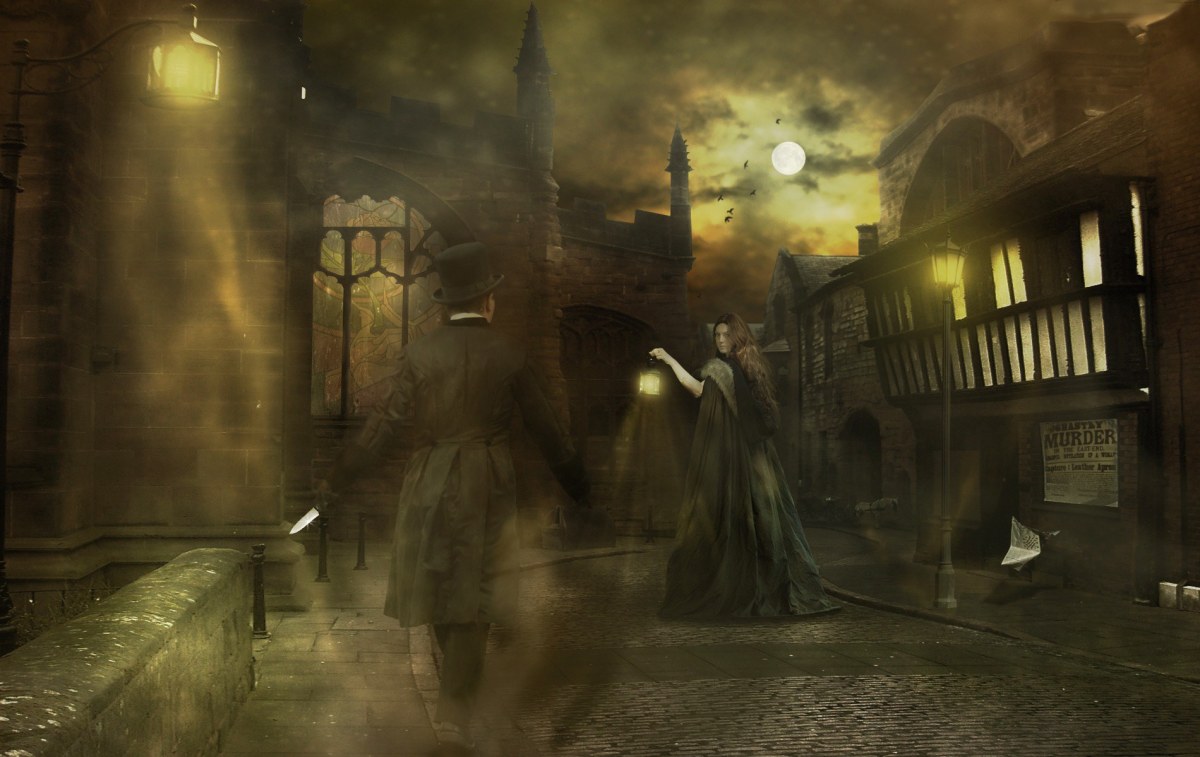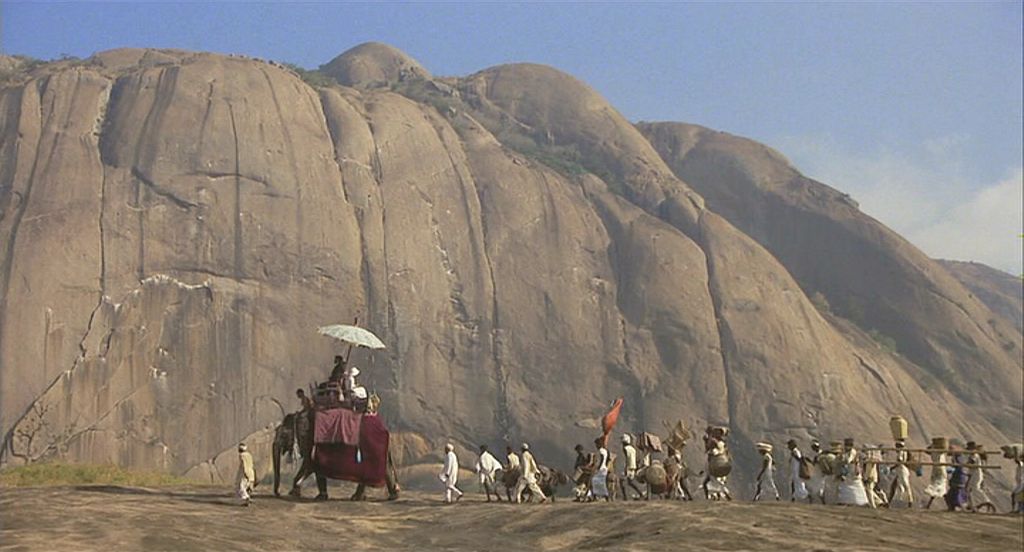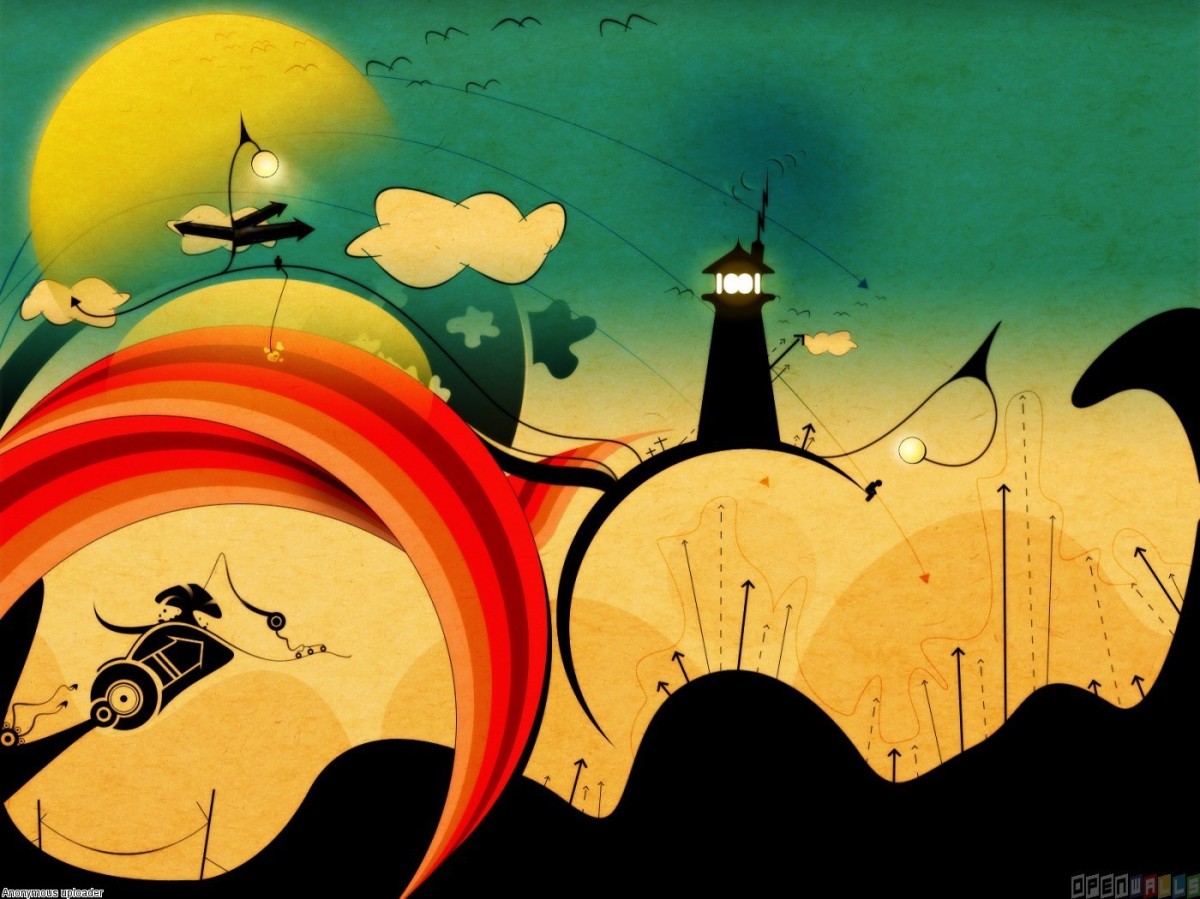“Oh man,” I thought, after I finished reading this book for the second time. “How do I do this?”
A recurring theme in A Passage To India is how multifaceted India is and how it’s impossible to put her into a box. Likewise, the novel itself has multiple ideas and aspects that can’t be summed up easily. Is it colonialist, post-colonialist, or neither? It’s a book that has managed to offend both British and Indians (and Edward Said), yet ultimately it’s not even a book about “India.” Or is it? Like the elephant and the blind men in the old proverb, seven people could read it and each come away with something different but still relevant.
Maybe that’s why I read it twice.
The British Raj is on the wane in the 1920’s when the action begins. Most of the main characters are British, and so is the author. Yet the opening scene is a dinner gathering exclusively of Indians. The big question of the evening is: “Is it possible to become friends with an Englishman?” Many of the diners argue, “No.” Among them is our eventual protagonist Aziz – a young widowed doctor with a passion for poetry:
“They all become exactly the same, not worse, not better. I give the Englishman two years, be he Turton or Burton. It is only the difference of a letter. And I give any Englishwoman six months. All are exactly alike.”
It seems hardly coincidence, then, when sometime later that evening Aziz stumbles upon an older Englishwoman while both are out for a stroll on the grounds of a mosque. Aziz is mortified at first, but soon realizes the old woman – Mrs. Moore – is open-minded and genuinely interested in exploring the new culture. An unlikely connection develops between the two and Aziz begins to reconsider his previous opinions.
Mrs. Moore has in tow a prospective daughter-in-law, Adela, who also fancies herself open-minded but seems to be hell-bent on seeing “the real India” and having some sort of romantic, whirlwind Oriental experience. Mrs. Moore’s son Ronny is busy trying to keep his head above water with his job as a government worker and does not at all approve of Mrs. Moore and Adela’s dallyings with Aziz and other locals:
“We’re out here to do justice and keep the peace. Them’s my sentiments. India isn’t a drawingroom.”
“Your sentiments are those of a god,” she said, quietly, but it was his manner rather than his sentiments that annoyed her.
Trying to recover his temper, he said, “India likes gods.”
“And Englishmen like posing as gods.”
Luckily Mrs. Moore and Adela – and Aziz – find a new friend in a school teacher, Cyril Fielding who is even more liberal in his attitudes than the two ladies and even less caring of what his fellow “Anglo Indians” think of him.
Fielding, Aziz, Mrs. Moore, Adela – along with Godbole, a Hindu colleague – begin a fragile but exciting new friendship together as they share food, conversation and poetry. Then one day, a planned expedition of theirs to the famous Marabar Caves goes horribly awry and leaves Aziz in greater doubt than ever before as to whether true friendship with English people is possible.
When I really like a book, I instinctively hold back from summarizing the whole thing. A Passage to India is worth the read and so I won’t spoil it – especially not the famous climax at the Marabar Caves. But I will highlight what it is that keeps me thinking about this book, long after I’ve finished reading it.
- The Characters
I think Forster had to be a sympathetic character during his lifetime: he was a gay man living in Edwardian England and as such was compelled to keep his identity a secret. In one way or another, all of his most important characters are outcasts or sympathetic.
Aziz is obvious: as an Indian he receives more than his fair share of prejudice and injustice from most of the British characters, although he identifies himself as a Muslim, not as an Indian (the British outsiders mostly fail to appreciate these distinctions within India, which is another recurring theme). It’s only when his negative experiences with the British leave him so embittered that he stands in the rain in a pivotal moment and realizes, “I am an Indian at last.”
For all his tribulations, though, Aziz is not without flaw. His passionate and easily provoked nature leads him to losing faith even in those he could still trust – namely, Fielding.
The relationship between Fielding and Aziz is one of the most memorable in classic literature. Detached and logical Fielding is the perfect foil to Aziz’s more reactive personality and their conversations are barbed and delightful:
(Aziz): “If money goes, money comes. If money stays, death comes. Did you ever hear that useful Urdu proverb? Probably not, for I have just invented it.”
(Fielding): “My proverbs are: A penny saved is a penny earned. A stitch in time saves nine; Look before you leap; and the British Empire rests on them. You will never kick us out, you know, until you cease employing M.L.’s and such.”
Forster had an Indian Muslim friend in his own life – Syed Ross Masood. Most agree that the character of Fielding is patterned after Forster himself, and Aziz was very possibly inspired by Masood. It would make sense: the most convincing and dynamic relationships in literature usually seem to have a basis in real life.
The character of Fielding may not get the flack Aziz does, but he is on the periphery of Anglo-Indian society as he generally prefers the company of Indians to his own people. He never had that attitude back in Britain – rather, he finds the expat crowd in India to ironically be more closed-minded than the English who live in England. By siding with Aziz he effectively chooses to go against his own people.
Adela Quested is not your typical heroine, either. She comes to India restless and full of expectation that’s set up for disappointment. She is well meaning but awkward. When she meets Aziz she sees him only as a label, not as an individual:
In her ignorance, she regarded him as “India,” and never surmised that his outlook was limited and his method inaccurate, and that no one is India.
Adela, like Aziz, has to go through her trials and misadventures and in the end becomes a more mature (if still awkward) person for it. Even Ronny, Adela’s uptight fiancé is not without redeeming qualities. He does his best to be patient with his mother and her opinions, which he considers to be idealistic. He tries to be reasonable and understanding, but his stressful and political work life makes it difficult.
One touch of regret – not the canny substitute but the true regret from the heart – would have made him a different man, and the British Empire a different institution.
It would be easy enough for an author writing a critique on British colonialism to depict those in charge as shallow and self-interested. Indeed, some of the more minor characters are just that – but examples like Ronny prove that it’s not always that simple and the reality isn’t black and white.
2.The Ideas
The narrative style of A Passage to India is simple and traditional, compared to certain other novels that were written around the same time (think, Virginia Woolf). In that way, it’s an easy and pleasant enough read. But the ideas themselves are anything but simple.
One of the most profound and disturbing parts of the book is when the characters enter the Marabar Caves and hear the endless “ou-boun” sound – the sound that represents the annihilation of every individual quality in life as it’s absorbed into one great whole. It’s a Eastern, particularly Hindu concept, but it freaks out western characters like Mrs. Moore who comes from a culture where individuality and immortality of the soul is paramount. Of course, the revelation in the cave – the “ou-boun” sound – is just fiction, but it gives rise to the thought: why is annihilation of the self so terrifying? Does the self live on after death, or does it get absorbed into something else? What’s the meaning of life, anyway?
A consistent theme I’ve noticed in reading novels that are written post World War I (this one included) is a heightened fear of death that comes with a doubtfulness as to there being any meaning in life. I know that sounds depressing, but I can’t really blame anyone who’s survived World War I for having those thoughts. In A Passage to India it’s interesting to explore these thoughts with a new spin that involves Eastern religious worldviews.
This novel is, in fact, filled with uncomfortable but important questions. Another one is, “how is England justified in holding India?” It’s a question that Aziz’s friend Hamidullah puts to Fielding.
“It’s a question I can’t get my mind on to,” he replied. “I’m out here personally because I needed a job…”
“Well-qualified Indians also need jobs in the educational.”
“I guess they do; I got in first,” said Fielding, smiling.
“Then excuse me again – is it fair an Englishman should occupy one when Indians are available…?
Finding himself in a corner, Fielding gives the honest answer the one can only give in such a situation:
“I can’t tell you anything about fairness. It mayn’t have been fair that I should have been born. I take up some other fellow’s air, don’t I, whenever I breathe? Still, I’m glad it’s happened, and I’m glad I’m out here. However big a badmash one is – if one’s happy in consequence, that is some justification.”
Forster is not one of those authors who takes a nihilistic view of things and claim that truth does not exist. However he suggests that the truth of some matters is more complex than we might assume. The values that the British and the Indians hold respectively lead to culture clashes and confusion. In the foreign atmosphere that is India, one cannot take anything for granted:
But nothing in India is identifiable, the mere asking of a question causes it to disappear or to merge into something else.
As a reader you have to wonder if Forster literally means us to understand India in that way, or if India is a metaphor for the world or even life itself. For all the metaphysical rumblings, it never gets dark or bitter like so many other 20th and 21st century novels. The ideas are just clear enough to be discussable, but deep enough to be tantalizing and discussion-worthy.
3. The Writing
Finally, what is a great novel is the writing is not up to par? A Passage to India can admittedly be a bit dense at times, but the conversational passages are generally wonderful, and some of the descriptions are lovely as well. Here is one example:
The faint, indescribable smell of the bazaars invaded her, sweeter than a London slum, yet more disquieting: a tuft of scented cotton wool, wedged in an old man’s ear, fragments of pan between his black teeth, odorous powders, oils – the Scented East of tradition, but blended with human sweat as if a great king had been entangled in ignominy and could not free himself, or as if the heat of the sun had boiled and fried all the glories of the earth into a single mess.
Forster traveled to India twice before finishing this novel. It’s not surprising to me, then, how alluring and vivid his descriptions of the scenery are. His India is not a perfectly beautiful one, nor is it sordid and dismal, but rather an intoxicating and arresting mixture of many qualities that resonates with other accounts of India that I have come across over the years. I have always wanted to travel to India, and this novel has only piqued my interest. I’d be curious to know what people who have been to India think of this book.
There are those novels whose authors are masterful at character development (Jane Austen), others which are intellectually stimulating (Dostoevsky) and yet others which are beautifully written (Lolita, by Nabakov). A Passage to India does not rank first in any of these categories, yet it manages to succeed in all three of them. A testament to this is the fact I have 17 pages’ worth of highlighted passages in my reader, and still haven’t sifted through them all. You could settle down for a book discussion with your friends on a rainy day with a pot of tea and some lemon scones and after three hours still not be done with this book. If I ever am able to make it to India – and it’s high on my list of places to visit – I will definitely read A Passage in India again and will probably find several more new vantages to look at it from. But it’s possible I’ll read it again even before then.















